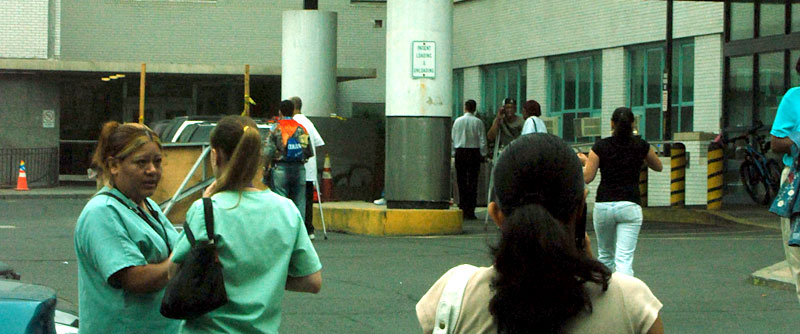The life of a migrant nurse
After stirring a large pot of chicken adobo, a native Filipino dish of soy sauce and pork marinated in black pepper, 26-year-old Christmas Borlongan quickly slams a lid on the pot and turns up her nose to sniff the air.
“Do you smell that?” she asks self-consciously. She looks around one of the two communal kitchens which can hardly fit three people simultaneously that she shares with 25 of her floor-mates in her First Avenue, Upper East Side dorm. All are immigrants who have recently come to America to practice nursing. “I hate when people cook and make the whole floor smell,” she explains, and then makes a disarmingly blunt statement. “Especially when the Indian people make curry. I don’t think I’ll ever eat curry again.”
With dark brown eyes and shiny, shoulder-length jet-black hair, you can almost mistake Christmas Borlongan for a woman of Indian descent herself. Her round face and tanned skin make her ethnically ambiguous; she could also easily pass for Hispanic or Malaysian. Soft facial features and her slightly plump frame combine to give her a youthful look, her face almost childish. In fact, looking at Christmas it is hard to believe she is 26 years old and completely on her own in a foreign country.
Small kitchens and funky smells are just some of the things Christmas has dealt with since March 12, 2006, when she emigrated from the Philippines to New York City to become a nurse. Due to the shortage of nurses in the United States, especially in large cities, special incentives (including higher pay) are being offered to nurses to come to cities such as New York.
This is not new. Going back at least forty years, no country has provided the U.S. with more immigrant nurses than the Philippines. The Asian country is a choice target for recruitment due to its respected nursing programs and most citizens’ ability to speak English. (The Philippines were an American colony from 1898, when they were taken at gunpoint from Spain, until 1948 – for many hundreds of years, Spanish was imposed on the Philippines by its colonizers from Spain. The language faded when the Americans imposed their will, but survives in family names and place names.) Today Philippine schools are taught primarily in English despite the prevalence of Tagalog, the Philippines’ national language. Specially designated nursing recruitment agencies court thousands of nurses each year, and the majority make the move. In fact, so many nurses leave the Philippines that the country is experiencing its own well-documented “nurse drain” crisis. But with higher pay, better working conditions and an overall better quality of life in a first-world country, it’s no surprise that thousands of nurses emigrate each year.

